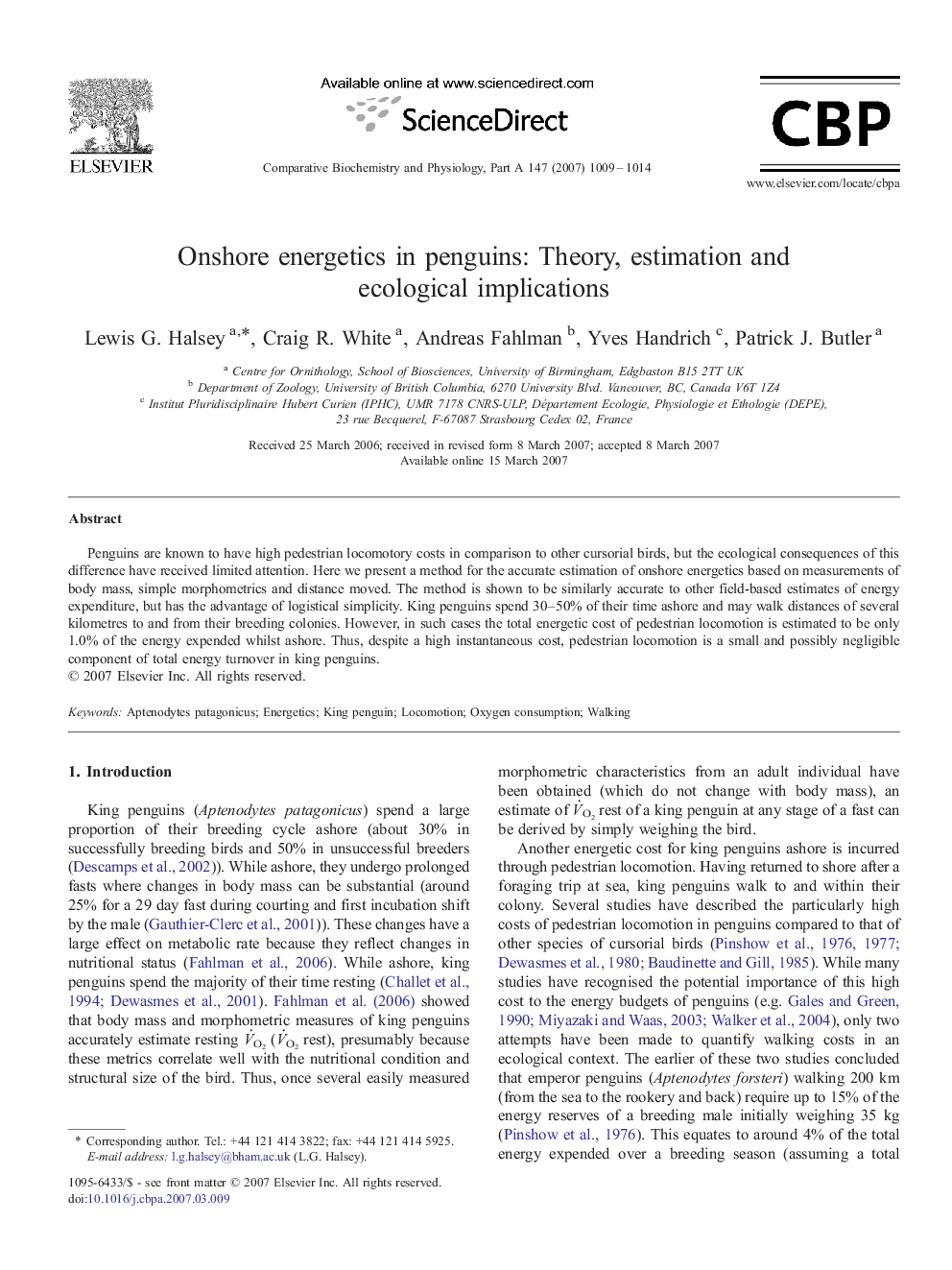| Article ID | Journal | Published Year | Pages | File Type |
|---|---|---|---|---|
| 1974795 | Comparative Biochemistry and Physiology Part A: Molecular & Integrative Physiology | 2007 | 6 Pages |
Penguins are known to have high pedestrian locomotory costs in comparison to other cursorial birds, but the ecological consequences of this difference have received limited attention. Here we present a method for the accurate estimation of onshore energetics based on measurements of body mass, simple morphometrics and distance moved. The method is shown to be similarly accurate to other field-based estimates of energy expenditure, but has the advantage of logistical simplicity. King penguins spend 30–50% of their time ashore and may walk distances of several kilometres to and from their breeding colonies. However, in such cases the total energetic cost of pedestrian locomotion is estimated to be only 1.0% of the energy expended whilst ashore. Thus, despite a high instantaneous cost, pedestrian locomotion is a small and possibly negligible component of total energy turnover in king penguins.
